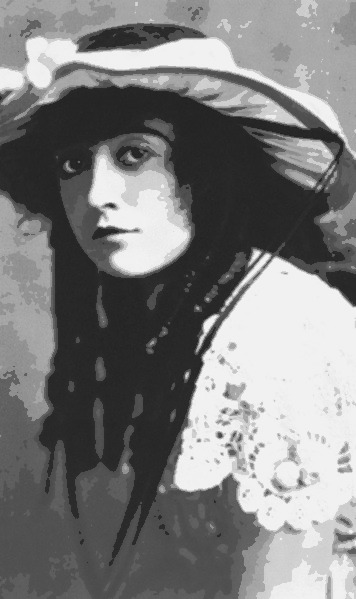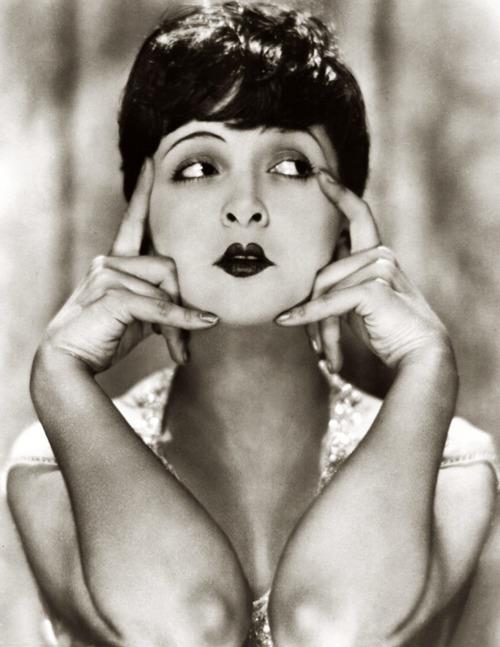Mabel Normand died on 23 February 1930.

Mabel Normand. I played around with a photo from 1915.

Mabel Normand died on 23 February 1930.

Mabel Normand. I played around with a photo from 1915.
When I was fifteen, I learned the truth behind Norma Desmond’s famous Sunset Boulevard assertion: “We didn’t need dialogue. We had faces!” Six decades of repetition has eroded this cutting indictment to a fragment of its original self, denuded of meaning even as it has become a pithy pop-culture sound bite that the least film savvy person can repeat with cocksure swagger. My enlightenment came in the form of a dusty, jacket free old book crammed with its fellows on a shelf at the public library. Subject: silent movie star portraiture. Impact: sudden, immense, striking. A well-established love of the arts, history, and old movies hadn’t prepared me for what I found in this neglected volume of photography. Questions rushed my senses: Who were these women and men? Why was their beauty sung not to the heavens but inarticulately whispered of in a suburban teenager’s bedroom? What happened to them? When did mystery and imagination leave entertainment photography, resulting in the garish, empty images that had engulfed my recent 1980s childhood?
TWO OF MY EARLY FAVOURITES:

Lya De Putti, whose movie career started in 1918.

Valeska Suratt by Orval Hixon, 1916. Her brief bid for silent screen stardom ended in 1917.
The trajectory of my life changed the day I checked out that book. A passion for old movies expanded to include silent films. I watched as many as I could find, and read everything available on the subject in our large library system. Result: hooked, permanently. Bonus: growing up to write about what I love, including silent movie culture.
Amidst the flavors of the day and luckless publicity seekers, the stars whose fame flamed into the sky with the spark and longevity of an uncontrollable firecracker, and those with fleshy charms but little talent, there stood performers with skill, magnetism, and dedication to a craft that was being forged as the cameras rolled. Some are remembered-if only for the persistence of their images in twenty-first century advertising-but most are forgotten, their work rarely seen by the modern masses. In a world where Mary Pickford has been reduced to the curve of her curls and Lillian Gish to her shy, arcane smile, where Charlie Chaplin is nothing but the sum of the sartorial trio of hat, cane, and shoes, what chance does Mabel Normand stand to be recognized and appreciated as a first-class artist? Even her lovely face is a fading footnote. Continue reading